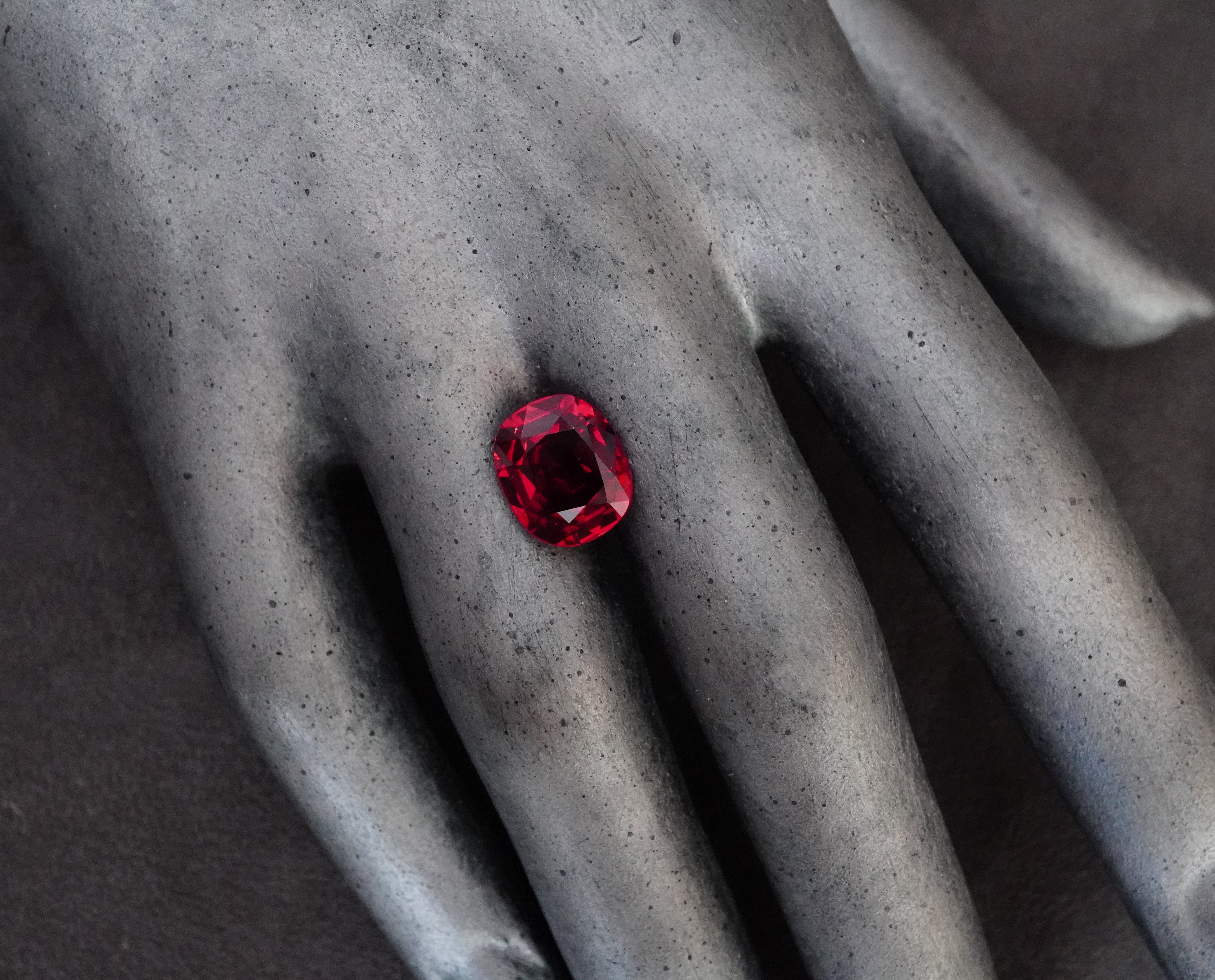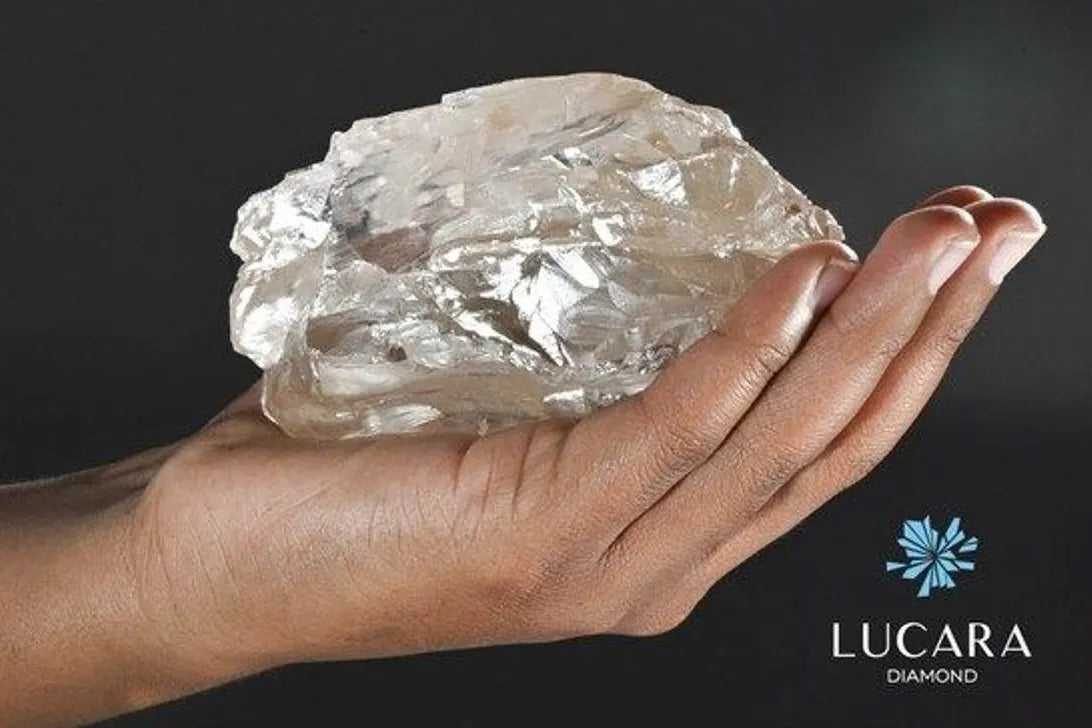
Jedi Spinel: The Brilliant Gem from a Galaxy Not So Far Away
Jedi spinel, named for its vivid, almost otherworldly glow reminiscent of the lightsabers from the Star Wars franchise, has excited gem enthusiasts and collectors around the globe. Known for its striking, intense pink and red hues, Jedi spinel stands out for its stunning appearance, as well as its rarity and unique optical properties. These qualities have quickly elevated Jedi spinel to a highly sought-after status in the world of gemstones.
In this article, we uncover the secrets behind Jedi spinel’s mesmerizing beauty, from its unique chemical composition and crystal structure to its dazzling optical properties. We’ll also explore the legendary mining locations where these gems are found, discuss current design and auction trends, and share essential tips on how to choose the perfect stone for your collection.
The Birth of the Jedi Spinel: A Gemological Revelation
In the early 2000s, renowned gemologist Vincent Pardieu was introduced to exceptional spinels in Myanmar (Burma) that were unlike any spinels he had ever seen. These spinels had a vivid pinkish-red hue and a neon-like glow that completely captivated him.
Inspired by the Star Wars series, Pardieu dubbed these vibrant gems “Jedi” spinels, describing their purity as untouched by the “dark side of the Force.” This catchy nickname quickly gained traction in the gem trade, significantly boosting spinel’s popularity.
The Chemistry and Structure Behind Jedi Spinel’s Radiance
Jedi spinel belongs to the spinel group of minerals. Spinels are magnesium oxide minerals characterized by the chemical formula MgAl2O4. The gemstone’s red hues come from trace amounts of chromium (Cr) substituting for aluminum in its structure. This same chromium is also responsible for Jedi spinels’ signature intense pink and red hues, often described as “neon” or “electric.”
In addition to providing color, chromium is also responsible for fluorescence in spinels, including Jedi spinels. Fluorescence is the gemstone’s ability to emit visible light when exposed to ultraviolet (UV) light. Under UV light, some spinels, especially those with high chromium content, can display a bright red or pinkish-red fluorescence, enhancing the gem’s vibrancy and making it appear more glowing.
Trace amounts of iron, however, can darken the red color in spinels and reduce their fluorescence. The more iron present in a spinel, the darker and less fluorescent it will be. In this way, iron introduces the “dark side of the Force” to spinels so to speak, reducing their brightness and glow.
Like all spinels, Jedi spinels are also known for their remarkable brilliance, transparency, and hardness. Spinels form in the isometric, or cubic, crystal system, similar to diamonds and garnets, and their rough stones commonly appear in octahedral shapes.
The isometric crystal system has three axes of equal length that intersect at 90-degree angles, making it highly symmetrical in all directions. This symmetry ensures that light travels at the same speed in any direction within the crystal, preventing any single direction from slowing it down. Because of this uniform light travel, spinel is singly refractive, meaning it does not split light into two separate paths. This property enhances spinel’s sparkle, giving it a bright, eye-catching appearance.
The isometric structure also minimizes internal stress and fractures, which improves the gem’s transparency and clarity by allowing light to pass through more easily.
Additionally, this crystal system contributes to spinel’s hardness and durability, with a rating of 8 out of 10 on the Mohs hardness scale (where diamond rates at 10). This makes spinel resistant to scratches and ideal for use in jewelry.
Inclusions: Nature’s Signature Inside Spinel
The inclusions within spinels provide valuable clues about their geological origins. Commonly, spinels contain crystal inclusions of minerals such as calcite and apatite. Well-formed negative octahedral crystals—cavities shaped like octahedrons that may house other minerals or liquids—are frequently observed.
Occasionally, spinels feature needle-like or plate-like rutile inclusions, which can result in asterism, the sought-after “star stone” effect, enhancing the gem’s visual appeal.
Top Spinel Mining Locations: From Historic Sites to Modern Hubs
Historically, spinels have been mined in regions such as Afghanistan, Sri Lanka, and Tajikistan, with more recent finds in Tanzania and Vietnam. However, in recent decades, the demand for spinels has significantly increased, mainly due to the vivid red and pink spinels discovered in Myanmar’s renowned gem-producing areas of Mogok and Namya (Nanyazeik).
Mogok, often called the “Valley of Rubies,” is famous for its high-quality rubies, sapphires, and spinels. This region is home to numerous mines, including the Man Sin mine, which is particularly noted for its vivid red and pink spinels. North of Mogok, the Namya region has also gained recognition for producing high-quality spinels with bright, neon-like red and pink hues. While Myanmar’s Mogok region and the Namya area are celebrated for these striking colors, similar vivid hues can also be found in Tanzania’s and Vietnam’s spinel-producing regions.
Additionally, the mines of Mogok and Namya are known for producing euhedral spinel crystals, which are naturally formed with well-developed faces that give them a faceted appearance. In the local trade, these crystals are referred to as nat thwe, meaning “polished by the spirits,” highlighting their exceptional natural beauty and quality. Aficionados prefer that these crystals remain in their “spirit-polished” state. However, uncut crystals pose challenges for traditional jewelry designs, as their natural, sharp corners are more prone to damage compared to the edges of faceted spinels when set in jewelry.
Jedi Spinel Creations: Showcasing Vivid Color and Exceptional Rarity
Jedi spinel has rapidly gained popularity among jewelry designers and gem collectors, leading to its inclusion in some notable high-end jewelry designs. Its vivid, neon-like pink and red hues, combined with its rarity, make Jedi spinel highly desirable, and this demand has also resulted in the gemstone being featured in both private gem collections and high-profile auctions.
While specific famous pieces are still emerging as the market for Jedi spinel continues to grow, several stunning examples have already caught the attention of enthusiasts and experts alike. Custom pieces by renowned jewelry designers are among the most recognized, with these artisans often using Jedi spinel as a centerpiece to create bold and eye-catching designs. These custom creations highlight the gemstone’s unique ability to stand out, whether set in earrings, necklaces, bracelets, or rings, often complemented by diamonds or other contrasting gems to enhance its vivid colors.
In recent years, Jedi spinels have also been showcased in prestigious auctions, sometimes fetching record prices due to their striking appearance and limited availability.
This growing recognition among jewelers and collectors is solidifying Jedi spinel’s reputation as a gemstone of exceptional beauty and value, making it a prized possession for those fortunate enough to acquire it.
How to Buy Jedi Spinel
When purchasing Jedi spinel, there are several factors to consider to ensure you are acquiring a high-quality gemstone:
Color: Look for intense, vivid red or pink hues. The term “Jedi” implies a saturation that makes the stone appear to glow from within. Avoid stones that look too dark, as they lack the characteristic brightness that defines Jedi spinel.
Clarity: While some inclusions are common in natural spinels, the best Jedi spinels will have minimal visible inclusions. Stones with high clarity will display more brilliance and sparkle.
Cut: The cut of a Jedi spinel significantly affects its appearance. Well-cut stones will exhibit excellent symmetry and maximize the stone’s natural brilliance. Common cuts for Jedi spinel include cushion, oval, and round shapes.
Origin: Authenticity is key. Ensure the gemstone is sourced from reputable gem dealers who can confirm its origin. Certificates of authenticity or gemstone reports from recognized gemological laboratories such as the American Gemological Laboratories (AGL) and the Gemological Institute of America (GIA) can ensure the stone’s provenance and quality.
Size and Carat Weight: Jedi spinels are available in various sizes, but larger stones with vivid color and clarity are rare and command a higher price. Determine your budget and size preference before making a purchase.
With its vibrant color, exceptional optical properties, and rarity, Jedi spinel is becoming increasingly sought-after by gem collectors and jewelry enthusiasts for its unique beauty. Whether you’re a seasoned collector or new to the world of gemstones, understanding Jedi spinel’s distinct characteristics will help you appreciate and invest in one of nature’s most extraordinary gems.
Photo (top): A 5.29-carat, cushion-shaped, unheated jedi spinel from Burma (Myanmar) from the Jogani collection.


